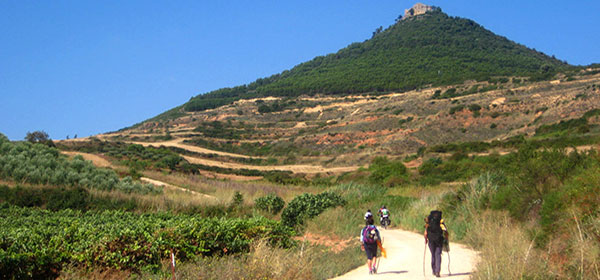By Maria Golpe
Thousands of people from all over the world walk or cycle the famous Camino de Santiago each year, to head to the city of Santiago de Compostela in Galicia, Spain.
So far this year, over 280,000 pilgrims have reached Santiago and received their Compostela pilgrim certificate in the city’s Pilgrims Office.
But what makes the Camino special? What attracts thousands of people from all corners of the world to this tiny city on the west coast of Spain? Here’s our guide to the Camino. It’s all you need to know.
The Camino
First of all, it is worth mentioning there are many Caminos. The most famous route and what most people refer to as ‘The Camino’ is the Camino Frances trail, or the French Way, which starts in the French town of St Jean Pied de Port in the Pyrenees and is some 800kms away from Santiago.
However, there are many other Camino ‘ways’, from other regions in Spain, as well as from Portugal, across France and beyond. English and Irish pilgrims would have travelled by boat to some of the ports on the Northern Coast of Spain and taken the path known as the English Way, for instance.
Originally a medieval pilgrimage, pilgrims heading to Santiago in the Middle Ages would have started their spiritual journey from their own home parish. It is for this reason that many Camino routes have emerged over the centuries. However, the most popular has been the Camino Frances.
Do I have to be religious?
You don’t have to be religious to walk the Camino de Santiago. Many people of all denominations walk the Camino for religious or spiritual reasons, of course; but many also do it for the challenge or to experience a very different kind of holiday.
In fact, a survey carried out by CaminoWays.com showed only 28 per cent of walkers ‘did the Camino’ for religious or spiritual reasons. Nearly 18 per cent said they did it to get away from daily life and connect with nature, over 28 per cent took it as a challenge, while 4.6 per cent wanted to learn more about the local culture.
How long does it take?
That will depend on how long you would like to take. There are many different routes, different distances and it is possible to start at different stages along the trails. It can take as short or as long as you like. For instance, you can walk the full Camino Frances from St Jean Pied de Port in just over a month but you could also walk the last stage from Sarria in just a week.
If you walk the last 100kms of the route, you will still be able to apply for your Compostela pilgrim certificate.
If you are looking for an additional challenge you could even start all the way from Le Puy en Velay in the heart of France, walk the Le Puy Camino to St Jean and then join the Camino Frances, but you could be on the road for over two months!
Who are the pilgrims?
Pilgrims of all ages, nationalities and backgrounds walk the Camino de Santiago. According to statistics from the Pilgrims Office in Santiago, over 27.16 percent of Camino pilgrims are under 30; 55 per cent of pilgrims are aged between 30 and 60, and 17.72 per cent are over 60 years old.
Over 140 nationalities were represented in the Camino in 2016, including Australia. Australians are among the top 10 nationalities on the Camino, and 4441 Aussies got their pilgrim certificate in Santiago in 2016.
How do I find my way?
The routes are marked with hundreds of yellow arrows and markers with scallop shells. They’ll take you all the way to Santiago.
What is the pilgrim passport?
The pilgrim passport or credential is the proof that you have completed the Camino. You’ll need to stamp it regularly along the way, in churches, restaurants and hotels.
If you are staying in public hostels along the way, this document will be needed to be shown and if you are not, it will be the document you need to show at the Pilgrims Office in Santiago to get your Compostela certificate.
Where do we stay?
There are different accommodation options on the Camino de Santiago routes: public hostels (albergues), private hostels, guest houses, hotels, casas rurales, paradores …
Public hostels or albergues operate on a first-come, first-serve basis, and they prioritise walking pilgrims first. Remember to take your ‘credential’ or pilgrim passport with you.
All other accommodation types can be booked in advance, and these will have different levels of comfort depending on what are looking for; shared rooms with bunk beds or if you’d like your own room and bathroom.
Casas Rurales are very special boutique properties in rural areas where you will experience the best of local hospitality. Paradores are historic buildings that have been transformed into luxury hotels. Did you know the five-star Parador in Santiago has been open and welcoming pilgrims for over 500 years?
Quick facts
- Camino de Santiago means Way of St James
- There are various Camino routes
- Don’t forget to stamp your pilgrim passport along the way
- Yellow arrows and scallop shells along the route will lead you to Santiago
- You don’t need to be religious to go on this journey
- Greet fellow pilgrim with the words: ‘Buen Camino!’
CaminoWays.com is a tour operator specialised in Camino de Santiago tours for both groups and individuals. Contact [email protected] for more information.
Have you ever dreamed of making a pilgrimage? Would you walk the Camino de Santiago?

